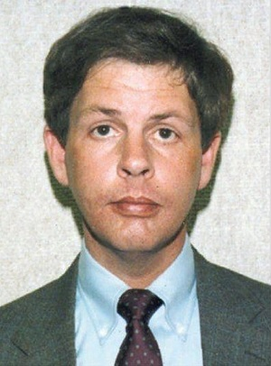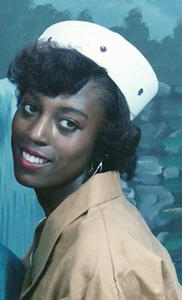
Jessica Beatrice "J. B." Fletcher is a fictional detective and writer and the main character and protagonist of the American television series Murder, She Wrote. Portrayed by award-winning actress Angela Lansbury, Fletcher is a best-selling author of mystery novels, an English teacher, amateur detective, criminology professor, and (briefly) congresswoman. In 2004, Fletcher was listed in Bravo's "100 Greatest TV Characters". AOL named her one of the "100 Most Memorable Female TV Characters". The same website listed her among "TV's Smartest Detectives". She was ranked at number six on Sleuth Channel's poll of "America's Top Sleuths". Guinness World Records called her the "most prolific amateur sleuth".

Henry Lee Lucas, also known as The Confession Killer, was an American convicted murderer. Lucas was convicted of murdering his mother in 1960 and two others in 1983. He rose to infamy as a claimed serial killer while incarcerated for these crimes when he falsely confessed to approximately 600 other murders to Texas Rangers and other law enforcement officials. Many unsolved cases were closed based on the confessions and the murders officially attributed to Lucas. He was convicted of murdering 11 people and condemned to death for a single case with a then-unidentified victim, later identified as Debra Jackson.
Audrey Marie Hilley, also known by the aliases Robbi Hannon and Teri Martin, was an American murderer and suspected serial killer. She was suspected in the death by poisoning of her husband and the attempted murder of her daughter, and spent three years as a fugitive from justice. Her life and crime spree are the subjects of the 1991 telefilm Wife, Mother, Murderer.

Postmortem is a 1990 crime fiction novel by author Patricia Cornwell and her debut novel. The first novel of the Kay Scarpetta series, it received the 1991 Edgar Award for Best First Novel.

Herbert Richard Baumeister was an American businessman and suspected serial killer. A resident of the Indianapolis suburb of Westfield, Indiana, Baumeister came under investigation for murdering over a dozen men in the early 1990s, most of whom were last seen at gay bars. Police found the remains of eleven men, eight identified, on Baumeister's property. Baumeister died by suicide after a warrant was issued for his arrest. He was later linked to a series of murders of at least eleven men along Interstate 70, which occurred in the early 1980s to the early 1990s.

The murder of Danielle Jones was an English child murder case involving a 15-year-old schoolgirl who disappeared from East Tilbury, Essex, England. There was a large and exhaustive search to find Jones' body and it was considered one of the biggest cases Essex Police had to deal with at the time. Despite the police's best efforts, her body was never found.

Christopher Bernard Wilder, also known as the Beauty Queen Killer and the Snapshot Killer, was an Australian-American serial killer who abducted at least twelve young women and girls, killing eight of them during a six-week, cross-country crime spree in the United States in early 1984. Wilder's series of murders began in Florida on February 26, 1984, and continued across the country through Texas, Oklahoma, Colorado, Nevada and California, with attempted abductions in Washington and New York. Wilder victimized attractive young women, most of whom he would entice by promising to take their pictures. After subduing them, he would torture and rape them before shooting, stabbing with a knife, or strangling them to death. Two or more of his victims were electrocuted using a makeshift electrical cord.

Sheila Bellush was a 35-year-old mother of six who was murdered on November 7, 1997, by a hired gunman named Jose Del Toro, on the orders of her ex-husband, Allen Blackthorne. Blackthorne, who had stalked Bellush since their divorce in 1987, allegedly wanted custody of their two children.

Shanda Renée Sharer was an American girl who was tortured and burned to death in Madison, Indiana, by four teenage girls. She was 12 years old at the time of her death. The crime attracted international attention due to both its brutality and the young age of the perpetrators, who were aged between 15 and 17 years old. The case was covered on national news and talk shows and has inspired a number of episodes on fictional crime shows.
Kirsten Marina Costas was an American high school student who was murdered by her classmate Bernadette Protti in June, 1984.
A familicide is a type of murder or murder-suicide in which an individual kills multiple close family members in quick succession, most often children, spouses, siblings, or parents. In half the cases, the killer lastly kills themselves in a murder-suicide. If only the parents are killed, the case may also be referred to as a parricide. Where all members of a family are killed, the crime may be referred to as family annihilation.

Far from Home is a 1989 American thriller film. It stars Matt Frewer, Drew Barrymore, Richard Masur, and Susan Tyrrell. It centers on a divorced father and his teenage daughter who run out of fuel in a small desert town and are forced to stay there in a run down trailer park while they attempt to find fuel for their car where at the same time, a series of killings begin to take place as the daughter becomes the obsession of two troublesome boys.

Richard Marc Edward Evonitz was an American serial killer, kidnapper, and rapist responsible for the deaths of at least three teenaged girls in Spotsylvania County, Virginia, and the abduction and rape of 15-year-old Kara Robinson in Richland County, South Carolina. Evonitz has been suspected of other murders, and confessed a number of crimes to his sister shortly before committing suicide.
Nathaniel White is an African-American serial killer. Active in the Hudson Valley region, in and near Orange County, NY during the early 1990s, White confessed to beating and stabbing six women to death while on parole.

The Trap is a 1946 American mystery crime film directed by Howard Bretherton and starring Sidney Toler and Victor Sen Yung. The main premise is that two members of a show troupe are murdered, and detective Charlie Chan is called in to solve the case.
The Flat-Tire murders were a series of unsolved murders in Broward and Dade County, Florida, occurring between February 1975 and January 1976. The name originated from the investigators' belief that, when the offender committed two of the murders, he had deflated the tires of the victims' cars. The list of suspected victims ultimately included twelve girls and women whose bodies were discovered in or near South Florida canals.

Oscar Ray Bolin Jr. was an American serial killer and convicted rapist who was executed in Florida for murder. In 1986, Bolin kidnapped and murdered three young women in Tampa, Florida. He was later connected to a fourth murder in Texas in 1987. The murders went unsolved for nearly four years, until the husband of his ex-wife called a tip line and implicated him. He maintained his innocence to the end.
Diane Michelle Zamora is a former United States Naval Academy midshipman and convicted murderer who, in 1995, murdered Adrianne Jessica Jones, who she believed was a romantic rival for her ex-fiancé and accomplice, David Graham. Graham had confessed to giving Adrianne a ride home and having sex with her one month earlier, leading an enraged Zamora to demand that he kill Jones. In the early morning of December 4, 1995, Graham picked up Jones in Zamora's car while she hid in the hatchback. They went to a remote location and got into a struggle, at which point Zamora hit Jones over the head with weights and Graham shot her twice after she broke away from them.

Angela "Angie" Faye Toler was a formerly unidentified decedent who was found in Richmond, Virginia in November 1992, who was unidentified for 20 years. After moving from Princeton, North Carolina to Richmond with her boyfriend, Toler fell out of communication with her family. Toler's boyfriend soon moved back to Princeton alone, but Toler was not with him, and friends and family of Toler never heard from her again. In 2011, Nona Best, who was a cousin of Toler, was at a National Missing and Unidentified Persons System (NamUs) academy in Atlanta when a presentation by a Maryland coroner included a picture of an unidentified woman found in Richmond who had died of hypothermia. Best recognized the woman as Angela Toler, and she reached out to Toler's mother and sister as well as Virginia medical examiner Lara Frame to procure DNA samples for comparison. In late July 2012, the unidentified woman was positively identified as Angela Faye Toler. In 2019, a North Carolina state law was passed after being sponsored by State Representative Allen McNeill that would require all law enforcement agencies in the state to enter missing person cases into NamUs after 30 days. McNeill has mentioned being inspired by the story of Best identifying Toler.












